Have you officially had it with your uncontrollable allergy flare-ups? Sneezing, watery eyes, sinus pressure, and all the usual allergy symptoms that afflict your health commence. Many allergy sufferers are equipped to handle the bouts of symptoms that strike when they step outside but what do you do when your allergy symptoms follow you inside your home? The brutal reality is your home is only as clean as the air within it, and according to the EPA, your indoor air quality can oftentimes be even more polluted than the air present outside. Dust, smoke, VOCs, and other allergens accumulate and create the source of contamination that will eventually lead to potential allergy symptoms within your home. In combating these indoor allergens in your home’s air, many will turn to an allergy recommended HEPA air purifier to remedy their allergy problems.
Contents
- Will an Air Purifier Defeat Allergens?
- Selecting an Air Purifier for Allergies
- HEPA Filtration (High-Efficiency Particulate Air)
- Benefits of a HEPA Air Purifier
- 3 HEPA Filter Myths Exposed
- A HEPA Filter Will Eradicate All Breathing Issues
- If an Air Purifier Has a HEPA Filter in it, then it Must Work
- Air Purifiers with HEPA Filters Remove Odors
Will an Air Purifier Defeat Allergens?
Allergies are one of the major causes of illness in the United States, and with as many as 50 million people suffering from this condition in the United States the need for alleviating practices to remove allergens, specifically from your indoor air, has become an essential component to allergy relief. Allergens such as pollen, dust, pet dander, dust mites, mold, and even cockroaches will incite the build-up of allergens in your confined indoor air and will lead to a noticeable spike in allergy-like symptoms. Allergens are composed of substances that are foreign to the body that will cause an allergic reaction when certain individuals are exposed to it. Once these foreign substances make contact and enter your passageways it can begin the allergic flare-up that is dreaded by all. Reducing the exposure to allergens and contaminants in your indoor air is critical and the key in defeating these allergens is through the use of an effective air purification device – better known as a HEPA air purifier- that has the ability to filter and eliminate small allergens trapped within the air.

Selecting an Air Purifier for Allergies
Allergens can vary in size and are usually measured in microns. Microns are small particulate matter, usually equal to one-millionth of a meter, that can easily become airborne and present difficulty when trying to completely remove from the environment – and most importantly from the air. Dust mites, household dust, and mold spore allergens – many of the culprits of allergies – are small microns ranging from 0.5 microns to 200 microns in size that will create the potentially unstable indoor environment for allergy sufferers.
What can you do to counteract this instability in your home? Air filtration and purification are pivotal in the mitigation of these micron-sized allergens circulating in the air. Air purifiers are devices that aid in the removal of air pollutants from the airspace, which can be especially beneficial to those who suffer from allergies. Depending on the air purifier, different technologies are used to target specific pollutants in the air – such as mold spores, bacteria, viruses, particulates, chemicals, and odors. During the selection process of buying an air purifier, especially for allergen removal, it is critical to ensure that the air purification device has the capability to remove fine particulate matter larger than 0.3 microns in size to guarantee the capturing of allergens within the system. Testing on different air purification technologies has shown that particulate matter as small as 0.3 microns in size need an efficient HEPA filtration to trap and prohibit small particles – like allergens – in the filtration system.
HEPA Filtration (High-Efficiency Particulate Air)
HEPA, or High-Efficiency Particulate Air, refers to a type of filter that removes 99.97 percent of particles above a certain size – usually, 0.3 microns are larger. Many allergists recommend a HEPA purifier to those with substantial allergies whose symptoms plague them almost constantly – as a HEPA filter will sift out airborne allergens such as dust, pet dander, pollen, and mold spores by capturing them in the filter reducing the levels in the air drastically. HEPA filters are one of the most reliable and effective allergy reduction applications you can utilize in your home. The origin of this filter began in the 1940s as the U.S. Army Chemical Corps and U.S. Atomic Energy Commission developed the first HEPA filters to assist in the protection against radioactive chemical warfare agents. However, following World War II, HEPA filtration was implemented into commercial and residential environments expanding its protection to all environments. Now, HEPA filtration is primarily used in hospitals, pharmaceutical labs, and even in homes and businesses as a means to reduce any harmful airborne particulates that can potentially impact the environment and health of those exposed.
Benefits of a HEPA Air Purifier
A HEPA air purifier works to intake airborne particles and filter them out of the air supply. HEPA filters trap air contaminants in a complex web of fibers to give it the capability to capture harmful dust, particulate, allergens, pet dander, microorganisms, and more. This filtration is even so effective that the CDC recommends a HEPA air purifier for air filtration for infectious patient isolation. Furthermore, HEPA air purifiers have certain benefits that other air purification systems cannot provide, the benefits of a HEPA filtration include the following:
✓ High-working efficiency
✓ Effective at taking micro-particles out of the air
✓ Ability to reduce allergies and asthma triggers
✓ Particulate removal up to 0.3 microns in size (this consists of allergens such as dust, dander, mold spores, etc.)
✓ Releases no harmful substances or ozone into the environment
3 HEPA Filter Myths Exposed
Even though HEPA filters and purifiers have been called the gold standard in air purification, it is not a cure-all for every allergy, asthma, or respiratory health issue you may be presented with. For many, the assumption that HEPA filtration can eradicate all breathing issues, be completely efficient air purification, and that a HEPA will remove any and all odors are some myths that are about to become exposed.
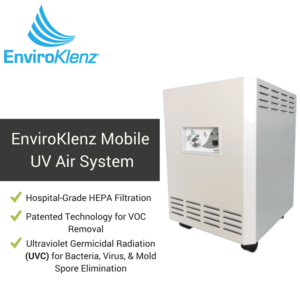 Myth: A HEPA Filter Will Eradicate All Breathing Issues
Myth: A HEPA Filter Will Eradicate All Breathing Issues
An air purifier is only a component to allergy relief, not a complete remedy. Some allergens are heavy, such as pollen, which will bring them down to the surfaces quicker than an air purifier can collect them. Over time an air purifier will take in these allergens, but for those who are suffering from allergies you want and need relief to be sooner rather than later. However, depending on the CFM rating of the air purifier these allergens could be collected faster. Nonetheless, you still will want to incorporate other allergy remedy practices in your home such as using chemical-free cleaning products, washing bedding in hot water, or even utilizing a dehumidifier within your personal environment.
Myth: If an Air Purifier Has a HEPA Filter, then it Must Work
For air purification, two key measurements include efficiency and effectiveness – but both can be measured differently depending on the filter type. HEPA filters are known for both their effectiveness and efficiency in air filtration and particulate removal, but to think that your HEPA filter is effective against every and all air pollutants is simply a myth. HEPA filters, although extremely effective against fine particulate matter, they have an inability to effectively remove many indoor air pollutants including mold, viruses, bacteria, gases and VOCs (Volatile Organic Chemicals) that are released into the air. When you are looking for an effective HEPA air purifier – especially one with a HEPA filter that also effectively removes mold, viruses, bacteria, gases, and VOCs – looking at the different stages of filtration that the system provides is important to ensure that your home is getting protection against a wide variety of indoor air pollutants.
Myth: Air Purifiers with HEPA Filters Remove Odors
HEPA filters contain a vast amount of capabilities, however, not included in this long list is the ability to neutralize odors in the air. Many air purifiers claim to remove odors from the air, but odor neutralization can only be accomplished through an additional filtration system in your air purifier. Air purifiers like the EnviroKlenz Mobile System, incorporate both HEPA filtration as well as chemicals and odor neutralization through a proprietary technology that utilizes earth minerals – with no carbon used at all. Selecting an air purifier with both stages of filtration will aid in the removal of both particulates and odors in your personal indoor air and help to improve and/or eliminate allergens from the environment to aid allergy sufferers.
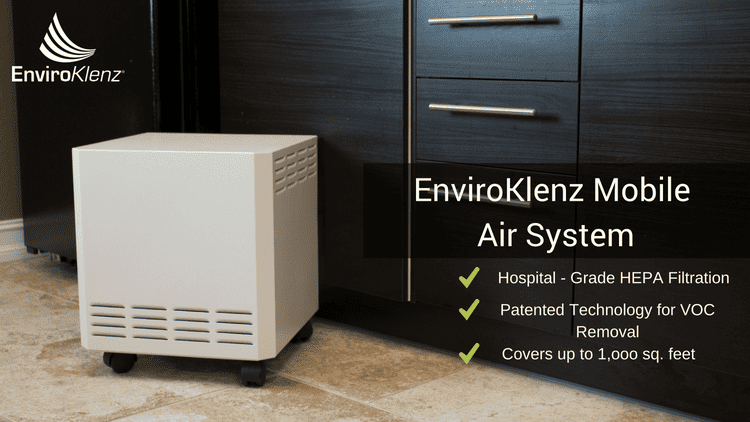
from Enviroklenz https://ift.tt/37CZ6RP
via https://enviroklenz.com
 High-efficiency particulate air, also known by many as a HEPA filter is a type of filtration that is used in both air handling systems and/or stand-alone air purifiers inside of an indoor environment. These filters are usually used within a home or other indoor space to provide an effective filtration of fine particulate matter from the air, even the smallest of particulates (as small as 0.3 microns in size). Pollutants are measured in microns and this is the form of measurement that is used to explain the capability of HEPA filters in capturing pollutants within the fiber media of this filter. To illustrate the size of a pollutant in microns, a human hair will vary between 17 to 181 microns in size, whereas viruses can range between 0.005 to 0.3 microns.
High-efficiency particulate air, also known by many as a HEPA filter is a type of filtration that is used in both air handling systems and/or stand-alone air purifiers inside of an indoor environment. These filters are usually used within a home or other indoor space to provide an effective filtration of fine particulate matter from the air, even the smallest of particulates (as small as 0.3 microns in size). Pollutants are measured in microns and this is the form of measurement that is used to explain the capability of HEPA filters in capturing pollutants within the fiber media of this filter. To illustrate the size of a pollutant in microns, a human hair will vary between 17 to 181 microns in size, whereas viruses can range between 0.005 to 0.3 microns. As we discussed previously, HEPA filters are usually composed of fiberglass which tends to have the highest filter efficiency, along with the highest pressure drop. However, in addition to the use of fiberglass material in HEPA filters, some HEPA’s will also use non-woven fabric material in its construction. This non-woven fabric material usually is composed of a polypropylene throughout the filter material. Polypropylene is a fiber material that has been known for its toxic nature and risks to public health that will contribute to an array of health effects from endocrine disruptors to irritation the mucous membranes, according to
As we discussed previously, HEPA filters are usually composed of fiberglass which tends to have the highest filter efficiency, along with the highest pressure drop. However, in addition to the use of fiberglass material in HEPA filters, some HEPA’s will also use non-woven fabric material in its construction. This non-woven fabric material usually is composed of a polypropylene throughout the filter material. Polypropylene is a fiber material that has been known for its toxic nature and risks to public health that will contribute to an array of health effects from endocrine disruptors to irritation the mucous membranes, according to 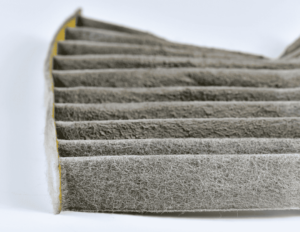 The life of a HEPA filter is often a major question when it comes to using this type of a filter in an indoor environment like a home. HEPA filters will generally last for quite a while in the air of an enclosed space, depending on the conditions within this indoor environment – like how many occupants are in the home, the number of pets, levels of pollution in the air, and the ventilation within the environment. Typically, you can bank on a HEPA filter lasting for about 2 to 3 years, based on the manufacturer’s recommendation. However, is it possible to increase the life of your HEPA filter in your home’s air by washing the HEPA filter and removing dust and dirt buildup on the filter media?
The life of a HEPA filter is often a major question when it comes to using this type of a filter in an indoor environment like a home. HEPA filters will generally last for quite a while in the air of an enclosed space, depending on the conditions within this indoor environment – like how many occupants are in the home, the number of pets, levels of pollution in the air, and the ventilation within the environment. Typically, you can bank on a HEPA filter lasting for about 2 to 3 years, based on the manufacturer’s recommendation. However, is it possible to increase the life of your HEPA filter in your home’s air by washing the HEPA filter and removing dust and dirt buildup on the filter media?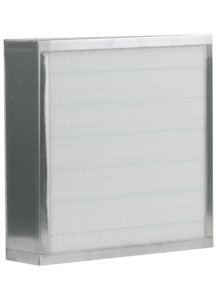
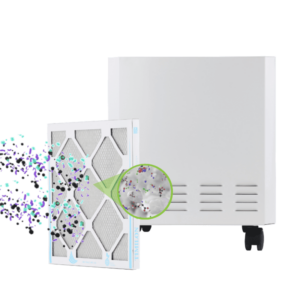

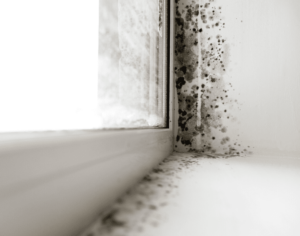 The topic of mold is usually associated with the well-known species of mold that is referred to as “black mold”. Black mold is a mold species that has a dark green or black appearance, hints the name associated with this mold, however, the most common species of this mold is actually known as Stachybotrys Chartarum. This mold is identified as a toxigenic mold, which means that the mold as it develops and grows in the environment will begin to release toxins into the air of the environment that will ultimately act as irritants that can harm those individuals that are exposed to it that have preexisting health conditions prior to exposure. Mycotoxins are the toxins that emit from black mold, and this occurs when the mold spores eat, grow, and form colonies with other spores, and lead to compromised air quality, human health, and overall environment.
The topic of mold is usually associated with the well-known species of mold that is referred to as “black mold”. Black mold is a mold species that has a dark green or black appearance, hints the name associated with this mold, however, the most common species of this mold is actually known as Stachybotrys Chartarum. This mold is identified as a toxigenic mold, which means that the mold as it develops and grows in the environment will begin to release toxins into the air of the environment that will ultimately act as irritants that can harm those individuals that are exposed to it that have preexisting health conditions prior to exposure. Mycotoxins are the toxins that emit from black mold, and this occurs when the mold spores eat, grow, and form colonies with other spores, and lead to compromised air quality, human health, and overall environment.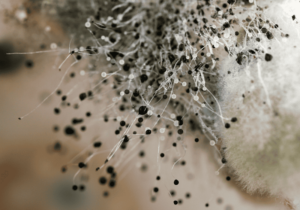 The development and growth of black mold within a home can happen seemingly overnight, as homeowners will usually not have the first inclination of this mold’s growth until they see either physical mold growth on the surfaces of their home or if they begin to experience adverse health symptoms that are isolated only when present inside their home environment. Black mold, like any other species of mold, thrives in warm conditions and will feed off of materials that are in high in cellulose and low in nitrogen – which leaves many building materials in a home a great food source for this mold. Typically, black mold will grow in a space in your environment that is out of sight, and hard to detect which will allow the mold to thrive and aggressively spread throughout the environment. Although most molds have the keen ability to grow quickly with a home, black mold is somewhat different, as the mold need a suitable material to be very wet for at least a week before it can begin its growth phase.
The development and growth of black mold within a home can happen seemingly overnight, as homeowners will usually not have the first inclination of this mold’s growth until they see either physical mold growth on the surfaces of their home or if they begin to experience adverse health symptoms that are isolated only when present inside their home environment. Black mold, like any other species of mold, thrives in warm conditions and will feed off of materials that are in high in cellulose and low in nitrogen – which leaves many building materials in a home a great food source for this mold. Typically, black mold will grow in a space in your environment that is out of sight, and hard to detect which will allow the mold to thrive and aggressively spread throughout the environment. Although most molds have the keen ability to grow quickly with a home, black mold is somewhat different, as the mold need a suitable material to be very wet for at least a week before it can begin its growth phase. If black mold is found growing and thriving inside of your home, will this mold likely make you sick upon exposure? The overall concerns that surround mold and exposure to different species of mold in a home, has led to increasing concern about the effects that the mold can contribute to human health. Many healthcare professionals, particularly allergists and immunologists are seeing an increase in patients that have mold-related sicknesses. When mold develops inside of a home, including black mold, it will become toxic to your health as the mold begins to emit mold spores and toxins into the air, such as mycotoxins, that can become ingested into the human body and into the lungs.
If black mold is found growing and thriving inside of your home, will this mold likely make you sick upon exposure? The overall concerns that surround mold and exposure to different species of mold in a home, has led to increasing concern about the effects that the mold can contribute to human health. Many healthcare professionals, particularly allergists and immunologists are seeing an increase in patients that have mold-related sicknesses. When mold develops inside of a home, including black mold, it will become toxic to your health as the mold begins to emit mold spores and toxins into the air, such as mycotoxins, that can become ingested into the human body and into the lungs.

 The
The  Clothing Apparel: Olefin fabric has been used in a number of different clothing apparel items that have been manufactured over the years. From sports and active wear to give the material its needed durability, to socks and hoodies that will undergo extreme climate changes throughout the day.
Clothing Apparel: Olefin fabric has been used in a number of different clothing apparel items that have been manufactured over the years. From sports and active wear to give the material its needed durability, to socks and hoodies that will undergo extreme climate changes throughout the day.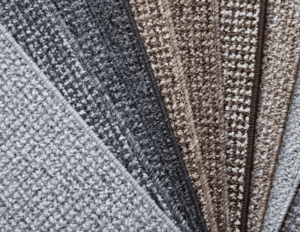 Polypropylene (olefin) carpeting can contain a variety of risks after it has been installed inside of a home, especially in large quantities. The fabric contains a blend of chemical compounds within its construction that will include VOCs, ethylene, polypropylene, etc. all of which when combined will produce potentially toxic chemical fumes into the air space of the environment as the chemicals begin to turn into gaseous compounds (usually from a liquid or solid state to start). The process of polypropylene carpeting releasing chemicals into the air as a gas is what is known as off gassing.
Polypropylene (olefin) carpeting can contain a variety of risks after it has been installed inside of a home, especially in large quantities. The fabric contains a blend of chemical compounds within its construction that will include VOCs, ethylene, polypropylene, etc. all of which when combined will produce potentially toxic chemical fumes into the air space of the environment as the chemicals begin to turn into gaseous compounds (usually from a liquid or solid state to start). The process of polypropylene carpeting releasing chemicals into the air as a gas is what is known as off gassing. Polyurethane wood finish is a product used on wood building materials found throughout a home that is used to coat the surfaces of this wood, which helps to protect the material from scratches while also resisting water damage if exposure to water occurs. In addition to the polyurethanes ability to protect the wood from potential damage, it also has been used to provide the wood items with a glossy, smooth finish that gives a more polished appearance in the home – which can be used on wood flooring, cabinets, and furniture. This wood finishing product can be found in most hardware stores and is classified as both a paint and/or a varnish finish – and is often labeled as a wood finish.
Polyurethane wood finish is a product used on wood building materials found throughout a home that is used to coat the surfaces of this wood, which helps to protect the material from scratches while also resisting water damage if exposure to water occurs. In addition to the polyurethanes ability to protect the wood from potential damage, it also has been used to provide the wood items with a glossy, smooth finish that gives a more polished appearance in the home – which can be used on wood flooring, cabinets, and furniture. This wood finishing product can be found in most hardware stores and is classified as both a paint and/or a varnish finish – and is often labeled as a wood finish.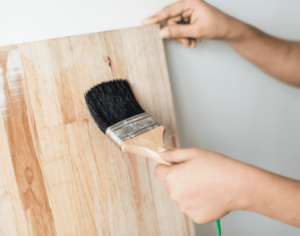 Water-based polyurethane is a popular option for many people due to its low odor and low toxicity characteristics. This polyurethane is applied on wood or other surfaces as clear and does not add a slight color like oil-based polyurethane does when used. In addition, the water-based polyurethane will dry much faster, however, it will not hold up well in heat or when exposed to other chemicals in the environment.
Water-based polyurethane is a popular option for many people due to its low odor and low toxicity characteristics. This polyurethane is applied on wood or other surfaces as clear and does not add a slight color like oil-based polyurethane does when used. In addition, the water-based polyurethane will dry much faster, however, it will not hold up well in heat or when exposed to other chemicals in the environment.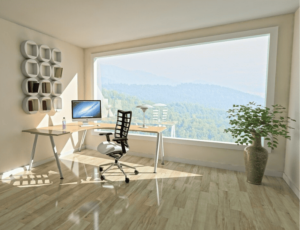 If you are someone who has recently undergone the application of polyurethane on your wood floors, cabinets, or furniture, then you are aware of the odorous fumes that will infiltrate the airspace of your environment. The length of time that it takes for polyurethane to cure and dry in the environment is typically the same length of time that it is considered toxic in the indoor air space. It has been estimated that depending on the type of polyurethane used, either water-based or oil-based, the length of time that the toxic fumes of polyurethane will linger in the air will range.
If you are someone who has recently undergone the application of polyurethane on your wood floors, cabinets, or furniture, then you are aware of the odorous fumes that will infiltrate the airspace of your environment. The length of time that it takes for polyurethane to cure and dry in the environment is typically the same length of time that it is considered toxic in the indoor air space. It has been estimated that depending on the type of polyurethane used, either water-based or oil-based, the length of time that the toxic fumes of polyurethane will linger in the air will range.